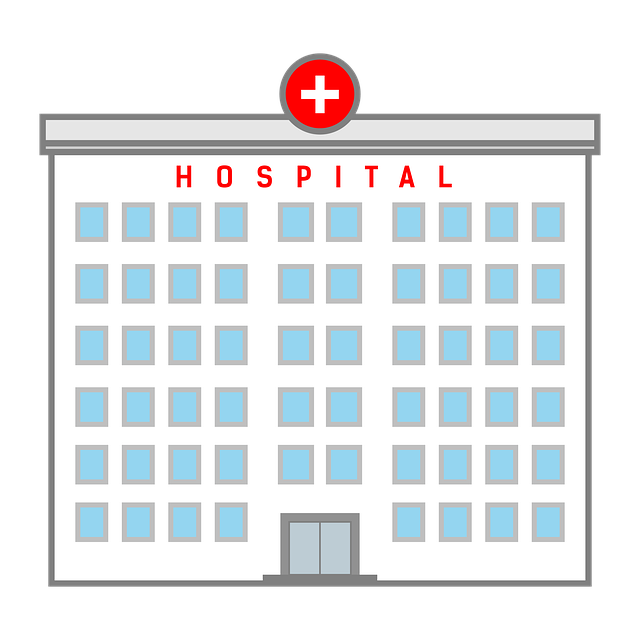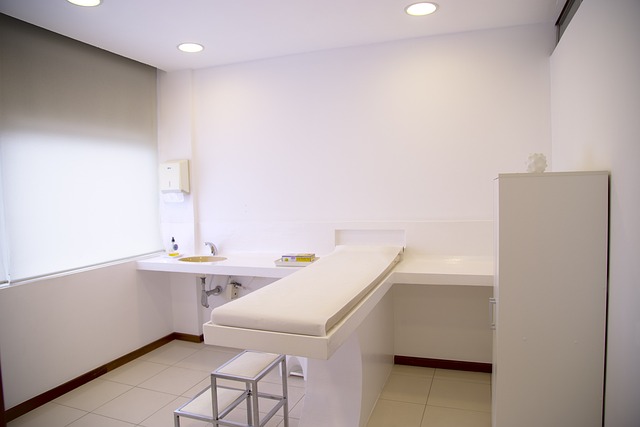Anxiety disorders, globally prevalent, disrupt daily life through excessive fear and worry. Major types include Generalized Anxiety Disorder (GAD) and Panic Disorder. Recognizing diverse physical & cognitive symptoms is crucial for effective anxiety treatment. Evidence-based approaches like Cognitive Behavioral Therapy (CBT) target negative thought patterns; mindfulness meditation promotes present-moment awareness; and exposure therapy gradually confronts fears. Lifestyle adjustments, including exercise, sleep, and diet, support anxiety management. Relaxation techniques like deep breathing and progressive muscle relaxation further aid in symptom control. Professional CBT and support groups offer tailored strategies for long-term well-being and improved anxiety treatment.
Anxiety disorders are a prevalent mental health concern, affecting millions worldwide. Understanding the various types and symptoms is the first step towards effective anxiety treatment. This article explores evidence-based techniques for managing anxiety, from cognitive behavioral therapy (CBT) to mindfulness meditation. We delve into exposure therapy, highlight lifestyle changes, relaxation techniques, and the importance of professional support, offering a comprehensive guide to overcoming anxiety and improving mental health.
Understanding Anxiety Disorders: Types and Symptoms

Anxiety disorders are a common mental health concern, affecting millions worldwide. They encompass a range of conditions characterized by excessive and persistent fear or worry that interferes with daily functioning. The two main types include generalized anxiety disorder (GAD) and panic disorder. Individuals with GAD may experience uncontrollable and often vague worries about various aspects of life, such as work, health, or everyday routines. On the other hand, panic disorder involves recurrent and unexpected panic attacks, intense periods of fear accompanied by physical symptoms like rapid heartbeat and shortness of breath.
Recognizing the symptoms is a crucial step towards anxiety treatment. Physical manifestations may include muscle tension, headaches, insomnia, fatigue, and digestive issues. Individuals might also experience cognitive symptoms such as persistent negative thoughts, difficulty concentrating, and a sense of restlessness. Understanding these various forms and symptoms is essential for those seeking effective anxiety treatment and can help foster a more informed approach to managing this condition.
Cognitive Behavioral Therapy (CBT): A Powerful Tool for Anxiety Treatment

Cognitive Behavioral Therapy (CBT) is a highly effective and evidence-based approach for managing anxiety, making it a cornerstone in the arsenal of many mental health professionals. This therapy type focuses on identifying and changing negative thought patterns and behaviors that contribute to anxiety disorders. By challenging and modifying these thoughts, CBT empowers individuals to develop healthier coping mechanisms and improve their overall well-being.
Through structured sessions, CBT helps patients understand the connection between their thoughts, feelings, and actions. It teaches them to recognize unhelpful cognitive distortions and replace them with more realistic and positive thinking. This process enables individuals to confront and manage anxiety triggers effectively, leading to reduced symptoms and improved quality of life. CBT has been proven particularly successful in treating conditions like generalized anxiety disorder, panic attacks, and social phobia, offering a practical and long-lasting solution for anxiety treatment.
Mindfulness Meditation: Calming the Anxious Mind

Mindfulness Meditation has emerged as a powerful tool in the arsenal of anxiety treatment. By encouraging individuals to focus on the present moment, rather than dwelling on past worries or future anxieties, this practice helps to calm the restless mind. Through regular meditation, one learns to observe thoughts and sensations without judgment, fostering a sense of detachment from anxious thoughts that can otherwise consume them.
This process involves paying attention to breath, bodily sensations, and surrounding environments, allowing individuals to anchor themselves in reality. As anxiety symptoms often stem from exaggerated or distorted perceptions, mindfulness practices help to reframe these experiences, promoting a deeper sense of peace and composure. By integrating this ancient practice into daily routines, many have found lasting relief in their anxiety treatment journey.
Exposure Therapy: Confronting Fears Head-On

Exposure therapy is a powerful anxiety treatment that involves gradually and deliberately confronting situations or objects that trigger fear or anxiety. By facing their fears in a controlled environment, individuals can learn to manage their responses and reduce the intensity of their anxious reactions over time. This approach is based on the principle that avoidance reinforces anxiety, whereas repeated exposure with no negative consequences leads to desensitization and eventual elimination of the fear response.
During exposure therapy sessions, patients are guided by a trained therapist through various stages of increasingly challenging scenarios or tasks. This process allows them to understand their anxiety triggers better and develop coping strategies tailored to their specific needs. As patients successfully navigate these exposures, they build confidence in their ability to handle anxiety-provoking situations, leading to improved overall mental well-being and reduced reliance on avoidance mechanisms commonly associated with anxiety disorders.
Lifestyle Changes for Better Mental Health

Anxiety treatment often begins with a look at one’s lifestyle, as small changes can significantly impact mental health. Incorporating regular physical activity into your routine is a powerful tool against anxiety. Exercise releases endorphins, which act as natural mood lifters, and can reduce stress hormones in the body. Even short bursts of movement, like taking a brisk walk or practicing yoga, can help calm anxious thoughts and improve overall well-being.
Additionally, prioritizing sleep and adopting healthy eating habits are essential lifestyle modifications. Aim for consistent, quality rest to allow your mind and body to recover from stressful events. A balanced diet, rich in fruits, vegetables, and whole grains, provides the nutrients needed for optimal brain function and can reduce symptoms of anxiety. These simple yet effective changes create a foundation for better mental health and serve as a strong starting point for managing and reducing anxiety.
Relaxation Techniques to Soothe Anxiety

Anxiety can be a relentless companion, but there are effective relaxation techniques to soothe its grip. Deep breathing exercises, for instance, involve focusing on slow and controlled breaths, which helps calm the mind and body. This simple yet powerful method reduces the physical symptoms of anxiety, such as a racing heart and tense muscles. By practicing deep breathing regularly, individuals can learn to activate their body’s relaxation response, providing an immediate and natural anxiety treatment.
Another valuable technique is progressive muscle relaxation (PMR). It involves tensing and then releasing different muscle groups in the body, encouraging awareness of physical sensations. This process helps individuals recognize and let go of tension, fostering a sense of calm. PMR can be particularly effective when combined with mindfulness practices, allowing one to become more attuned to their bodies and minds, thereby effectively managing anxiety symptoms.
Seeking Professional Help: Therapists and Support Groups

Seeking professional help is a significant step towards managing and overcoming anxiety. Therapists are trained to provide effective anxiety treatment, offering various evidence-based techniques and strategies tailored to individual needs. Cognitive Behavioral Therapy (CBT), for instance, focuses on identifying and changing negative thought patterns and behaviors contributing to anxiety. Through therapy sessions, individuals learn coping mechanisms, relaxation techniques, and problem-solving skills to navigate anxious situations more effectively.
Support groups are another valuable resource for those struggling with anxiety. Sharing experiences and connecting with others facing similar challenges can foster a sense of belonging and understanding. Group settings provide an opportunity to learn from peers, exchange coping strategies, and gain different perspectives on managing anxiety. Combining professional therapy with support group participation often proves effective in promoting long-term mental well-being and improving overall anxiety treatment outcomes.
